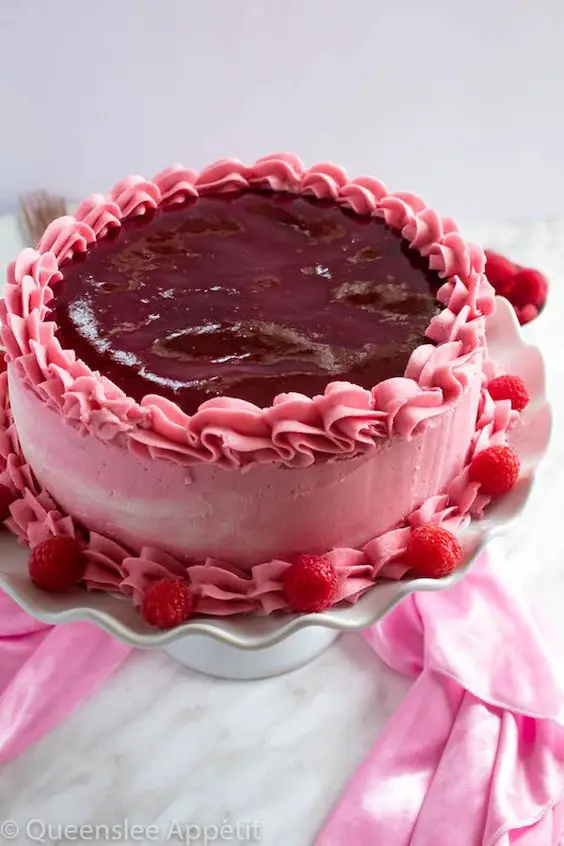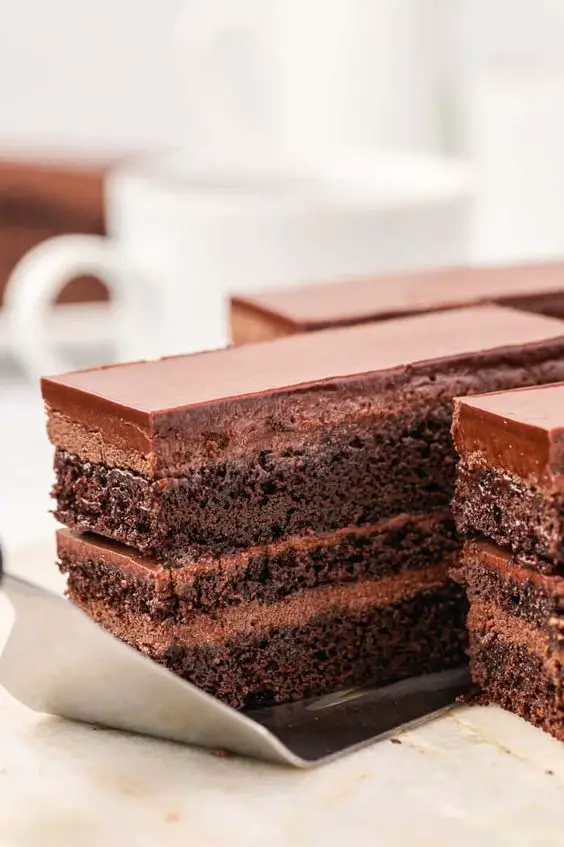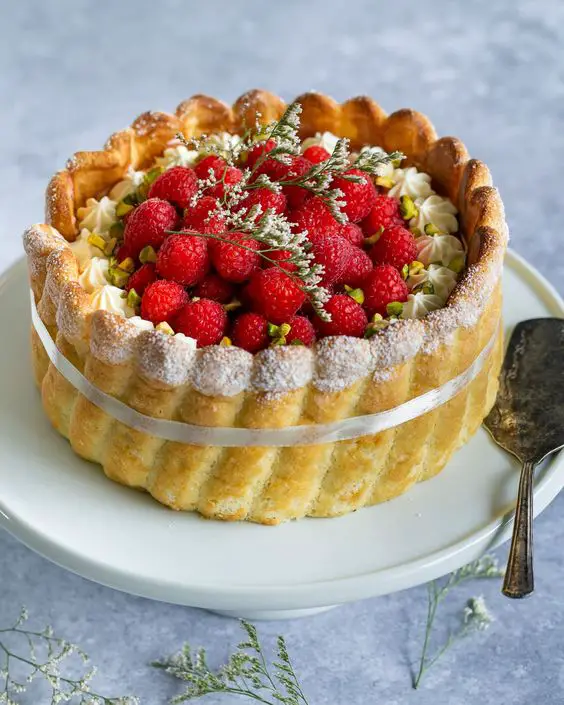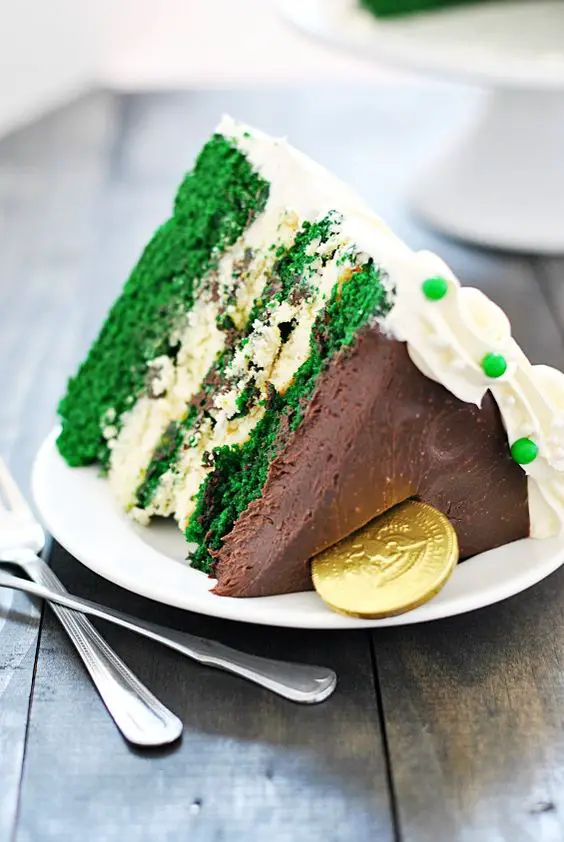Italian Macarons, a delicate and exquisite confection, epitomize the artistry of French pastry-making while drawing inspiration from the refined techniques of Italian cuisine. These dainty almond-based treats are characterized by their smooth, glossy exteriors, light and airy interiors, and a delightful array of flavors and fillings that enchant both the eyes and the palate.
Unlike their French counterpart, Italian Macarons are created using an Italian meringue—a mixture of egg whites and a hot sugar syrup—that lends stability and a lustrous finish to the batter. This technique results in a macaron that boasts a slightly chewy texture, harmonizing beautifully with a sumptuous assortment of fillings, from velvety ganaches to vibrant fruit curds.
Italian Macarons beckon the adventurous baker to embark on a journey of precision and patience. The balance of sweetness, the art of folding, and the mastery of piping are all pivotal elements in achieving these dainty masterpieces. With their elegant appearance and irresistible flavors, Italian Macarons have become a beloved treat for special occasions, celebrations, and moments of indulgence, inviting enthusiasts to savor the harmonious fusion of French sophistication and Italian finesse.

What is Italian Macarons?
An Italian Macaron is a delicate and elegant sweet treat that is renowned for its smooth, glossy exterior, crisp shell, and chewy yet airy interior. It is a type of confection made from almond flour, egg whites, and a sugar syrup, and is known for its exquisite taste and visual appeal.
Italian Macarons are often confused with the more widely known French macarons, but they are made using a different technique. The key distinction lies in the method of preparing the meringue. In Italian Macarons, an Italian meringue is created by gradually pouring a hot sugar syrup into whipped egg whites, resulting in a stable and glossy meringue. This meringue is then combined with almond flour to create a smooth batter, which is piped into small rounds onto baking sheets. The macarons are then baked until they form a crisp shell with a slightly chewy interior.
Italian Macarons can be filled with a variety of delectable fillings, such as ganaches, buttercreams, fruit curds, jams, or other flavored creams. These fillings add an extra layer of flavor and texture to the macarons, creating a delightful contrast to the delicate shell.
Italian Macarons come in an array of colors and flavors, making them a versatile canvas for creativity. They are often enjoyed as elegant desserts, party favors, or special treats for occasions such as weddings, birthdays, and other celebrations.
In summary, Italian Macarons are exquisite almond-based confections that showcase the perfect balance of texture, flavor, and visual appeal, making them a cherished indulgence for those who appreciate the art of fine pastry-making.
What is the difference between French and Italian macarons?
The main difference between French and Italian macarons lies in the method of making the meringue, which affects their texture and appearance. Both types of macarons are delicate and elegant almond-based confections, but they have distinct characteristics:
French Macarons:
- Meringue: French macarons use a French meringue, which is made by whipping egg whites and gradually adding granulated sugar. The meringue is whipped until stiff peaks form, and it is then folded into a mixture of almond flour and powdered sugar. This method is known for its simplicity and is a bit more delicate.
- Texture: French macarons have a delicate and slightly crisp exterior with a chewy and soft interior. The texture is often described as a melt-in-your-mouth experience.
- Appearance: French macarons typically have a smoother, rounder, and flatter appearance with a distinctive “foot,” which is the ruffled edge that forms at the base during baking.
- Difficulty: Making French macarons can be a bit trickier due to the sensitivity of the French meringue and the potential for overmixing or undermixing the batter.
Italian Macarons:
- Meringue: Italian macarons use an Italian meringue, which involves creating a stable meringue by whipping egg whites and slowly adding a hot sugar syrup. This meringue is then combined with almond flour and powdered sugar. The Italian meringue provides more stability and a glossy finish to the batter.
- Texture: Italian macarons tend to have a slightly chewier and denser texture compared to French macarons. They are still delicate, but the texture is more uniform throughout.
- Appearance: Italian macarons often have a glossier, more textured exterior with a well-defined foot. The shells may also be slightly thicker and more substantial.
- Difficulty: Making Italian macarons can be considered slightly easier due to the stability of the Italian meringue. It’s often preferred by those who are new to macaron making.
Both French and Italian macarons offer a delightful sensory experience and can be filled with a variety of flavorful fillings. The choice between the two methods often comes down to personal preference and the desired texture and appearance of the final product. Whichever method you choose, creating these exquisite treats can be a rewarding culinary adventure.
Why are my macarons cracked or uneven?
Cracked or uneven macarons can be frustrating, but they are common challenges that many bakers face when making these delicate confections. Several factors can contribute to cracked or uneven macarons, and understanding these potential causes can help you troubleshoot and achieve better results. Here are some common reasons why your macarons might be cracked or uneven:
1. Overmixing or Undermixing:
- Overmixing the batter can lead to cracked macarons. When you overmix, the batter becomes too thin and loses its structure, making it prone to cracking during baking.
- Undermixing can result in uneven macarons with lumps or air pockets, which can cause cracks as the batter expands during baking.
2. Incorrect Folding Technique:
- Properly folding the almond flour and meringue mixture is crucial. Underfolding can lead to thick and lumpy batter, while overfolding can result in a runny batter that doesn’t hold its shape and cracks during baking.
3. Baking Temperature and Time:
- Baking at too high a temperature can cause the macarons to rise too quickly and crack. It’s important to follow the recommended temperature in your recipe.
- Overbaking can also cause cracks. Macarons are delicate and can become brittle if baked for too long.
4. Rapid Temperature Changes:
- Sudden temperature changes during baking, such as opening the oven door too soon or transferring the macarons to a cold surface, can cause cracks.
5. Uneven Piping or Uneven Oven Heat:
- Unevenly piped macarons can result in uneven baking and cracked shells. Use a piping template or macaron mat to ensure consistent sizes and shapes.
- An oven with uneven heat distribution can cause some macarons to bake faster than others, leading to cracks. Use an oven thermometer to ensure accurate temperature.
6. Humidity and Weather Conditions:
- Humidity can affect the macaron batter and cause cracking. Baking macarons on a dry day is generally recommended to avoid excess moisture in the batter.
7. Aging the Macaron Shells:
- Allowing the piped macaron shells to rest and form a “skin” before baking can help prevent cracks. The resting time allows the shells to set and develop a smooth surface.
8. Ingredients and Measurements:
- Using old or improperly measured ingredients can affect the macaron batter’s consistency and lead to issues like cracking.
9. Almond Flour Texture:
- Almond flour that is too coarse can lead to cracked shells. It’s best to use finely ground almond flour.
10. Almond Flour to Meringue Ratio:
- An incorrect ratio of almond flour to meringue can affect the batter’s stability and cause cracks. Ensure you follow the recommended measurements in your recipe.
To troubleshoot cracked or uneven macarons, carefully review your baking process and make adjustments as needed. Experimenting with different techniques and being mindful of factors like mixing, piping, baking temperature, and humidity can help you achieve beautifully smooth and uniform macarons.

Italian Macaron Recipe
Ingredients:
- 150g almond flour (finely ground)
- 150g confectioners’ sugar (powdered sugar)
- 110g egg whites (about 3-4 large eggs), aged and at room temperature
- 150g granulated sugar
- 38g water
- Gel-based food coloring (optional)
- Filling of your choice (ganache, buttercream, curd, etc.)
Instructions:
1. Prepare Ingredients:
- Line baking sheets with parchment paper or use a macaron mat for piping.
- Prepare a piping bag fitted with a round tip (approximately 1/2-inch or 1 cm in diameter).
- Sift the almond flour and confectioners’ sugar together to ensure a smooth and lump-free mixture. Set aside.
2. Prepare the Italian Meringue:
- In a small saucepan, combine the granulated sugar and water. Place over medium heat and attach a candy thermometer to the side of the saucepan.
- While the sugar syrup is heating, start whisking the egg whites in a clean, dry mixing bowl on low speed. Gradually increase the speed to medium.
- When the sugar syrup reaches around 230°F (110°C), increase the mixer speed to high. You want to reach stiff peaks at the same time the sugar syrup reaches 240°F (116°C).
- Once the sugar syrup reaches 240°F (116°C), carefully and slowly pour it into the whipping egg whites in a thin, steady stream, while the mixer is running.
- Continue whipping the meringue on high speed until the mixing bowl is cool to the touch and the meringue is glossy, stiff, and holds its shape.
3. Combine and Macaronage:
- Gently fold the sifted almond flour and confectioners’ sugar mixture into the Italian meringue in three parts. Use a spatula to fold until just combined, avoiding overmixing. The batter should be thick and glossy.
- If using food coloring, add a small amount of gel-based food coloring and fold until evenly distributed. Be mindful not to overmix.
4. Pipe and Rest:
- Transfer the macaron batter into the prepared piping bag.
- Pipe small rounds onto the lined baking sheets, holding the piping bag perpendicular to the surface and squeezing until the desired size is reached.
- Tap the baking sheets gently on the counter to release any air bubbles. Let the piped macarons sit at room temperature until a skin forms on the surface. This can take anywhere from 15 to 30 minutes, depending on humidity.
5. Bake and Cool:
- Preheat your oven to 300°F (150°C).
- Bake the macarons for about 15-18 minutes, rotating the baking sheets halfway through. The macarons should have a smooth top and a foot that has developed around the base.
- Once baked, remove from the oven and allow the macarons to cool completely on the baking sheets before gently peeling them off the parchment paper.
6. Fill and Assemble:
- Match similar-sized macaron shells.
- Pipe or spread your chosen filling onto one shell and sandwich it with another shell.
- Store the filled macarons in an airtight container in the refrigerator for at least 24 hours to allow the flavors to meld.
7. Serve and Enjoy:
Bring the macarons to room temperature before serving. Enjoy the delightful combination of crisp, chewy shells and flavorful fillings!
Remember that making macarons may require practice to achieve perfect results. Be patient, pay attention to details, and adjust your technique as needed.
Nutrition information
The nutritional information for Italian Macarons can vary based on factors such as the specific ingredients used, the size of the macarons, and any fillings or decorations added. Below is a general estimate of the nutritional content for one medium-sized Italian Macaron (approximately 10g in weight) without any filling:
Nutritional Information for One Italian Macaron:
- Calories: Approximately 40-50 kcal
- Total Fat: 2-3g
- Saturated Fat: 0.2-0.5g
- Carbohydrates: 5-6g
- Sugars: 4-5g
- Protein: 1g
- Fiber: 0.5-1g
- Sodium: 5-10mg
Please note that these values are approximate and can vary based on the specific recipe and ingredients used. If you add fillings such as buttercream, ganache, or fruit curd, the nutritional content will change accordingly.
Additionally, it’s important to keep in mind that macarons are a treat and are often enjoyed in moderation. While they are delightful and elegant, they are also relatively high in calories and sugar due to their almond and sugar content. If you’re looking for more precise nutritional information, it’s recommended to use a nutrition calculator or consult with a registered dietitian.

Tips to make perfect Italian Macaron
Creating perfect Italian Macarons requires attention to detail and practice. Here are some valuable tips to help you achieve beautifully smooth, glossy, and delicious Italian Macarons:
1. Use Quality Ingredients: Start with fresh and high-quality ingredients, including finely ground almond flour, fresh eggs, and gel-based food coloring if desired.
2. Accurate Measurements: Accurate measurements are crucial. Use a digital kitchen scale to measure ingredients by weight for consistent results.
3. Aged Egg Whites: Age your egg whites by separating them from the yolks and leaving them at room temperature for about 24 hours. This helps reduce moisture content and stabilizes the meringue.
4. Italian Meringue Technique: Master the Italian meringue technique. Gradually pour the hot sugar syrup into the whipped egg whites to create a glossy and stable meringue.
5. Proper Mixing and Folding: Gently fold the almond flour mixture into the meringue using a spatula. Aim for a smooth, lava-like consistency, ensuring not to overmix or undermix.
6. Piping Technique: Use a piping bag with a round tip to pipe consistent rounds of batter onto parchment-lined baking sheets. Maintain a 90-degree angle for even shapes.
7. Resting Time: Allow the piped macarons to rest at room temperature until a dry “skin” forms on the surface. This helps create a smooth, even shell and prevents cracking.
8. Consistent Sizes: Use a piping template or macaron mat to ensure uniform sizes and shapes. This helps the macarons bake evenly.
9. Oven Temperature and Baking Time: Preheat your oven accurately and use an oven thermometer to verify temperature. Bake the macarons at the recommended temperature for the specified time, rotating the baking sheets halfway through.
10. Avoid Underbaking or Overbaking: Watch the macarons closely as they bake. Underbaking can result in sticking to the parchment paper, while overbaking can lead to brittle shells.
11. Cooling and Peeling: Allow the baked macarons to cool completely on the baking sheets before gently peeling them off. The shells should release easily.
12. Fillings and Assembling: Experiment with a variety of fillings such as ganache, buttercream, curd, or jams. Match similar-sized shells for even macarons, and pipe or spread the filling onto one shell before sandwiching with another.
13. Aging and Flavor Development: Allow the filled macarons to mature in the refrigerator for at least 24 hours. This allows the flavors to meld and the texture to improve.
14. Practice and Patience: Making perfect Italian Macarons may take practice. Don’t be discouraged by initial attempts—each batch is a learning opportunity.
15. Troubleshoot and Adjust: If your macarons have issues, such as cracks or uneven shapes, analyze the process, make adjustments, and keep refining your technique.
Remember, creating Italian Macarons is a blend of science and art. With perseverance and attention to detail, you’ll be able to achieve elegant and delectable macarons that showcase your baking skills.
How to serve
Serving Italian Macarons is a delightful experience that enhances their elegance and flavor. Here’s how to serve Italian Macarons in a way that captures their beauty and allows your guests to fully enjoy their delectable taste:
1. Presentation:
- Arrange Italian Macarons on a beautiful serving platter, dessert stand, or decorative tray. Choose a presentation that complements the theme or occasion.
2. Colorful Display:
- Showcase the vibrant colors of the macarons by arranging them in a visually appealing pattern. Grouping them by color or creating an ombre effect can add a stunning visual impact.
3. Variety of Flavors:
- Offer an assortment of macaron flavors to provide a diverse tasting experience. Label each flavor to help guests choose their favorites.
4. Pairing Suggestions:
- Provide pairing suggestions, such as a small cup of coffee, tea, or a glass of champagne, to complement the flavors of the macarons.
5. Edible Centerpiece:
- Create an edible centerpiece by stacking or arranging macarons in a decorative tower or pyramid. This can serve as both a visually appealing centerpiece and a delicious treat.
6. Individual Servings:
- Place individual macarons in decorative cupcake liners or small boxes to serve as elegant party favors or gifts for guests to take home.
7. Dessert Buffet:
- Incorporate Italian Macarons into a dessert buffet along with other sweet treats, such as mini cakes, pastries, and cookies, for a delightful array of options.
8. Custom Displays:
- Get creative with custom displays, such as using vintage trays, elegant glass domes, or tiered dessert stands, to elevate the presentation.
9. Special Occasions:
- Italian Macarons are perfect for special occasions like weddings, bridal showers, baby showers, birthdays, and elegant gatherings. Tailor the presentation to match the theme and décor.
10. Garnishes and Decorations:
- Consider adding edible garnishes or decorations, such as edible flowers, gold or silver dust, or a light dusting of powdered sugar, to enhance the visual appeal.
11. Decorative Accents:
- Add decorative accents such as ribbons, bows, or small tags with flavor descriptions to personalize the presentation.
12. Serving Utensils:
- Provide small tongs, dessert forks, or elegant serving utensils to allow guests to pick up the macarons without touching them.
13. Serving Instructions:
- If serving different flavors, consider providing a small guide or description of each flavor to help guests choose their macarons.
Remember that serving Italian Macarons is not only about their taste but also about the overall presentation and experience. Pay attention to the details, create a visually appealing display, and let the elegance and flavors of the macarons shine.
How to store
Properly storing Italian Macarons is essential to maintain their freshness, texture, and flavor over time. Here’s how to store Italian Macarons to ensure they remain as delightful as when they were first made:
Short-Term Storage (1-3 Days):
- Room Temperature: Italian Macarons can be stored at room temperature for a short period, typically 1 to 3 days. Place them in a single layer in an airtight container to prevent exposure to air and moisture.
- Avoid Direct Sunlight: Keep the container of macarons away from direct sunlight, heat sources, and humidity, as these factors can cause the macarons to soften, lose their texture, or become sticky.
Long-Term Storage (3+ Days):
- Refrigeration: For longer storage, especially if you’re not planning to consume the macarons within a few days, it’s best to store them in the refrigerator. Place them in an airtight container to prevent moisture absorption.
- Layering and Separation: Layer the macarons with parchment paper or non-stick baking paper to prevent them from sticking to each other. This also helps preserve their appearance.
- Flavor Melding: Allow the macarons to mature in the refrigerator for at least 24 hours before consuming. This resting period allows the flavors to meld and the texture to improve.
Freezing (1-2 Months):
- Freezer-Friendly: Italian Macarons can be frozen for longer-term storage, especially if you have a surplus or want to prepare in advance.
- Individual Wrapping: Wrap each macaron individually in plastic wrap or place them in a single layer in an airtight freezer-safe container. This prevents freezer burn and preserves their quality.
- Label and Date: Label the container with the date of freezing to keep track of their storage time.
Thawing and Enjoying:
- Gradual Thawing: To enjoy frozen macarons, transfer them from the freezer to the refrigerator. Allow them to thaw gradually in the refrigerator. Avoid rapid temperature changes, as this can affect their texture.
- Restoring Texture: After thawing, bring the macarons to room temperature before serving. This helps restore their original texture and flavor.
Important Tips:
- Avoid storing Italian Macarons in the same container as strongly scented foods, as macarons can absorb odors.
- Do not store macarons in airtight containers in the freezer for too long, as they may lose some of their delicate texture over time.
- Always handle macarons gently to prevent crushing or cracking, especially when taking them out of storage.
By following these storage guidelines, you can enjoy your Italian Macarons at their best, whether you’re savoring them within a few days or preserving their quality for longer periods.

FAQ’s and Troubleshooting
FAQs (Frequently Asked Questions):
- What is the difference between French and Italian macarons? The main difference lies in the method of making the meringue. French macarons use a French meringue (whipped egg whites and sugar), while Italian macarons use an Italian meringue (hot sugar syrup added to whipped egg whites). Italian macarons tend to have a slightly chewier texture and a glossier appearance.
- Why do my macarons have hollow shells? Hollow shells can result from overmixing the batter, underbaking, or improper folding of the meringue and almond flour mixture. Achieving the right consistency and technique is crucial to avoid hollow macarons.
- Why are my macarons cracked or uneven? Cracked or uneven macarons can be caused by undermixing the batter, baking at too high a temperature, or rapid temperature changes during baking. Ensure you follow the correct mixing and baking techniques.
- How do I achieve consistent macaron sizes? Using a template or macaron mat to pipe the batter onto the baking sheets can help ensure consistent sizes. Piping at a 90-degree angle and applying consistent pressure can also contribute to uniform shapes.
- Can I make macarons without almond flour? Almond flour is a crucial ingredient in macarons, contributing to their texture and flavor. While some substitutions are possible (such as other nut flours), almond flour is traditionally used for authentic macaron results.
- How do I store Italian macarons? Store Italian macarons in an airtight container in the refrigerator. Bring them to room temperature before serving to allow the flavors to fully develop.
- Can I freeze Italian macarons? Yes, Italian macarons can be frozen. Place them in an airtight container or freezer bag, and they can be stored for up to a month. Thaw them in the refrigerator before serving.
Troubleshooting:
- My macarons are too flat and spread out during baking. What went wrong? This could be due to overmixing the batter or not folding it enough. Achieving the right consistency is crucial. Additionally, ensure your oven temperature is accurate and that you’re using a reliable recipe.
- Why are my macarons too chewy or sticky? Overbaking or underbaking can result in macarons with the wrong texture. Proper baking time and temperature are essential to achieve the desired chewiness.
- My macarons have a rough or grainy texture. What caused this? A rough texture can result from not sifting the almond flour and confectioners’ sugar properly. Make sure to sift these dry ingredients to create a smooth batter.
- My macarons have no feet. What should I do? “Feet” refer to the characteristic ruffled edges that develop during baking. No feet can result from improper mixing or not allowing the piped macarons to rest before baking. Let the piped macarons sit at room temperature until a skin forms before baking.
- My macarons are too oily or greasy. How can I prevent this? Oily macarons can result from using almond flour with a high oil content. Opt for blanched almond flour with a finer texture and lower oil content.
- Why did my macarons turn out lopsided or uneven? Uneven macarons can result from unevenly piped batter or uneven oven temperature. Use a piping template or mat, and ensure your oven heats evenly.
Remember that making perfect Italian macarons requires practice and attention to detail. Small adjustments to your technique and ingredients can make a significant difference in achieving beautiful and delicious macarons.
Happy baking!









